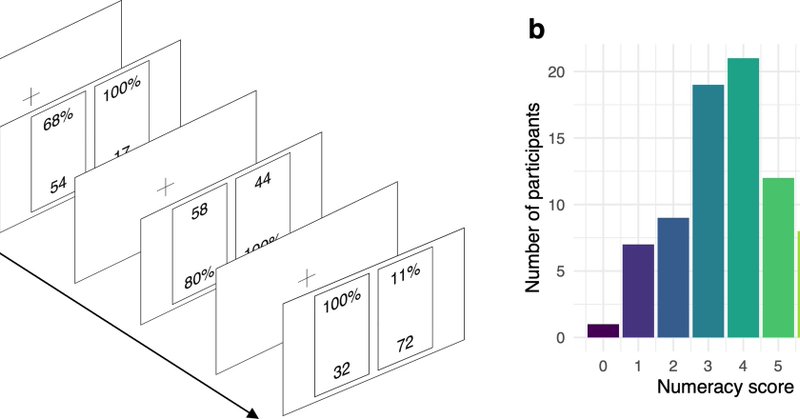
Veronika Zilker
@VZilker
Followers
518
Following
86
Media
28
Statuses
77
computational modeling | decisions under risk & uncertainty | attention
München, Bayern
Joined June 2020
Attentional biases in sequential sampling can give rise to nonlinear probability weighting. 👇Thread on my new paper with Thorsten Pachur, now accepted at Psychological Review!. Preprint: .@arc_mpib @mpib_berlin .1/10
6
34
114
RT @SciReports: Attentional dynamics of evidence accumulation explain why more numerate people make better decisions under risk @VZilker.ht….
0
4
0
RT @decisionneurop: Attentional dynamics of evidence accumulation explain why more numerate people make better decisions under risk https:/….
nature.com
Scientific Reports - Attentional dynamics of evidence accumulation explain why more numerate people make better decisions under risk
0
5
0
#OpenAccess postprint of my paper showing that attentional biases can render decision making more efficient—available thanks to the amazing team of the @mpib_berlin library! 🙏. Check it out here:.
Stronger attentional biases can be linked to higher reward rate in preferential choice. 👇 Thread on my new paper, now out in Cognition! . @arc_mpib @mpib_berlin .1/8.
0
0
6
Why do more numerate people tend to make better decisions under risk?. My ✨ new paper in @SciReports ✨ offers an explanation in terms of pre-decisional information search and processing, using computational modeling. 👇 Thread below. 1/8
2
16
40
Now available: ✨#OpenAccess postprint✨ of our paper on attribute attention and option attention in risky choice, thanks to the fantastic team of the @mpib_berlin library 🙏. Check it out here:.
How do attribute attention and option attention shape preferences in risky choice? . New paper with @ThorstenPachur, out now in Cognition: . 1/8
0
3
24
RT @ThorstenPachur: @VZilker discovers a description-experience gap in attention that accounts for the description-experience gap in risky….
0
3
0














